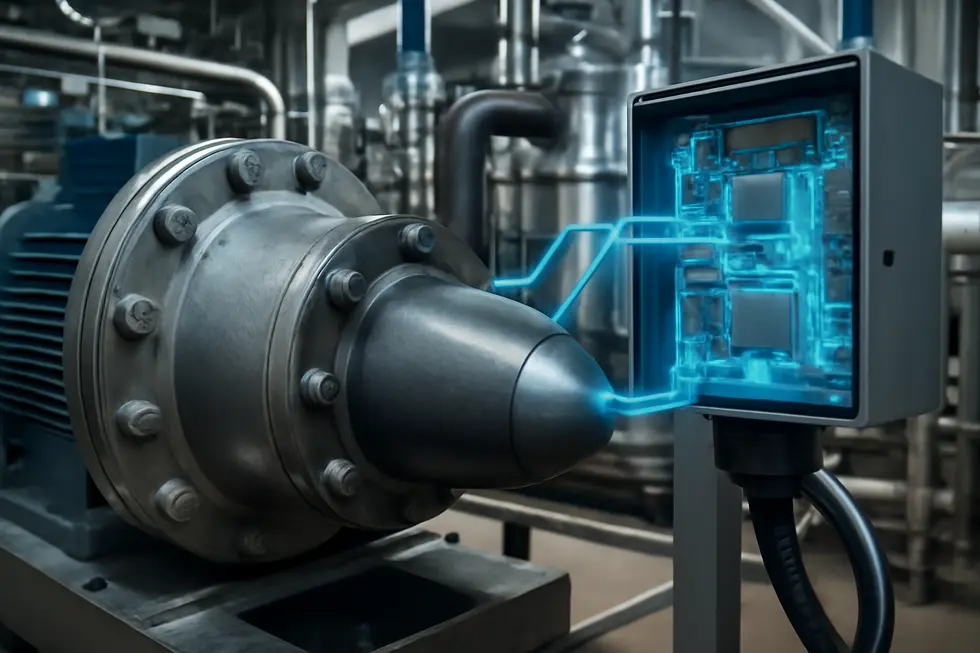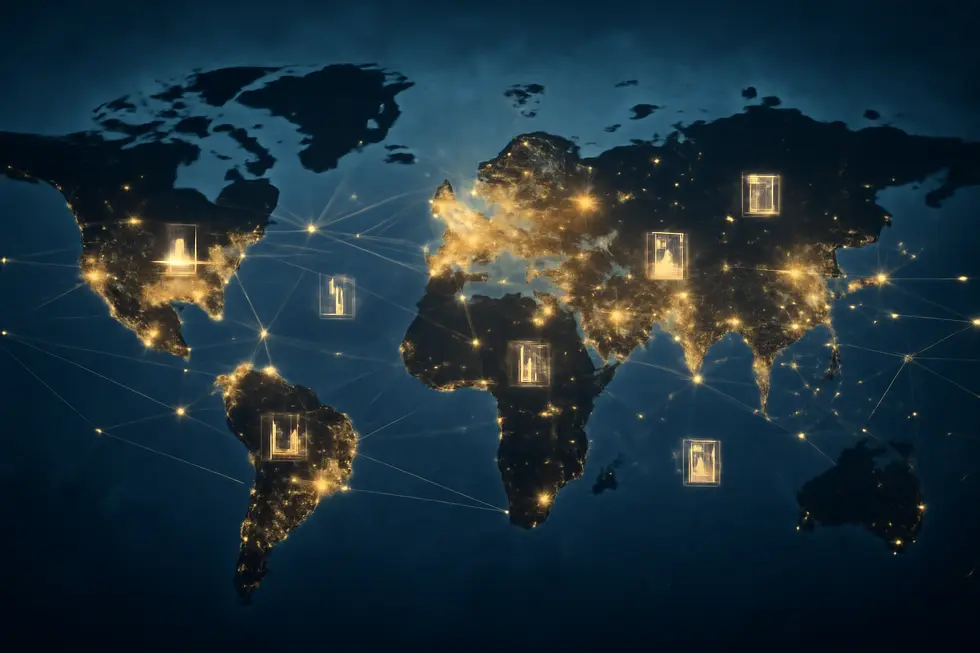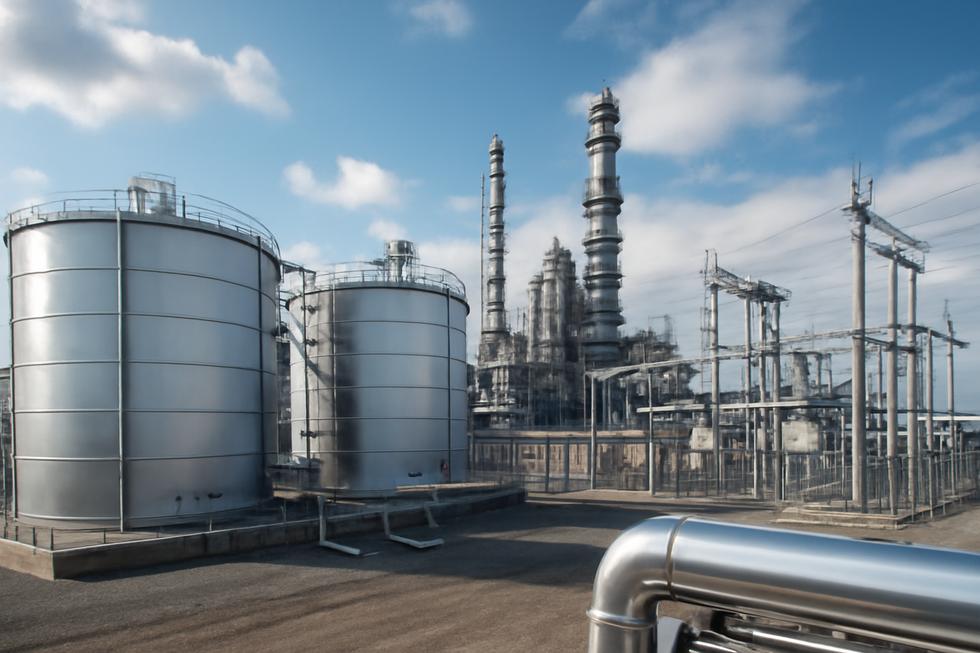Introduction
CR protection encompasses a suite of crucial measures designed to shield vital components, infrastructure, or processes in your business from damage and disruption. Whether referring to cathode ray protection in electronics, corrosion resistance in materials, or managing change requests in projects, understanding CR protection is essential for maintaining operational integrity, reducing costs, and staying competitive. Each dimension of CR protection — technological, economic, geopolitical, and societal — plays a strategic role in helping businesses secure their assets and build sustainable growth. This overview will clarify how embracing CR protection strengthens your company’s foundation and drives efficiency in an interconnected, rapidly evolving market.
Tables of Contents
Chapter 1: Technological Aspects of CR Protection
- Pioneering Innovations Elevating CR Protection Technologies
- Economic Dimensions of Technological Advances in CR Protection
- Navigating Geopolitical Dynamics Shaping Technological Advances in CR Protection
- Balancing Innovation and Responsibility: Societal and Ethical Dimensions of CR Protection Technologies
Chapter 2: Economic Impact of CR Protection Strategies
- Innovative Technologies Driving Economic Gains in CR Protection
- Geopolitical Dimensions of CR Protection: Economic Stakes and Strategic Consequences
- Enhancing Societal Well-being Through the Economic Benefits of CR Protection
- Shaping Market Dynamics and Corporate Competitiveness through Strategic CR Protection
Chapter 3: Geopolitical Significance of CR Protection
- Innovative Technologies Driving Geopolitical Strength in CR Protection
- Economic Dimensions of CR Protection in Shaping Geopolitical Power
- How CR Protection Shapes Global Power Dynamics and Alliances
- Cultural Dynamics and Societal Impacts Shaping the Geopolitics of CR Protection
Chapter 4: Societal and Environmental Dimensions of CR Protection
- Innovations Driving Sustainable and Social Impact in CR Protection
- Economic Ripple Effects of CR Protection on Society and Environment
- Navigating Geopolitical Complexities: Societal and Environmental Stakes in CR Protection
- Fostering Ethical Responsibility and Public Awareness in CR Protection
Chapter 1: Technological Aspects of CR Protection

1. Pioneering Innovations Elevating CR Protection Technologies
Advancements in CR protection technologies have increasingly focused on enhancing durability, precision, and efficiency across various sectors. Techniques such as advanced coatings and nano-engineered materials now provide superior resistance against environmental degradation and physical wear. For cathode ray tubes and related display technologies, innovations include improved vacuum sealing methods and phosphor stabilization treatments, which significantly extend device longevity and maintain image fidelity. In materials science, cutting-edge corrosion resistance solutions leverage multilayered polymer films and smart sensor integration to enable real-time monitoring and proactive maintenance, reducing downtime. Electronic protection circuits are evolving with adaptive current regulation to stabilize emissions and prevent damage from electrical surges. These breakthroughs not only optimize performance but also lower lifecycle costs and environmental impact, aligning technological progress with sustainability goals. Moreover, the integration of digital monitoring systems within CR protection frameworks facilitates predictive analytics, allowing systems to anticipate and mitigate risks before failure occurs. This sophisticated synergy of materials science, electronics, and data-driven management elevates CR protection from a reactive measure to a proactive strategy essential for critical infrastructure and consumer devices. For business owners looking to understand intellectual property considerations in technology innovation, resources on comprehensive intellectual property protection offer valuable insights.
2. Economic Dimensions of Technological Advances in CR Protection
Technological advancements in CR protection do more than enhance performance; they significantly influence economic outcomes across industries reliant on these technologies. By integrating sophisticated protective materials, coatings, or control systems, organizations can substantially reduce maintenance costs and extend operational lifespans of critical components. This translates into lowered replacement frequency and diminished downtime, fostering greater productivity and cost-efficiency. Furthermore, improved reliability mitigates risks associated with system failures, which often lead to substantial financial losses.
Investing in CR protection technology also drives innovation and competitive advantage. Companies adopting cutting-edge solutions can offer more durable, higher-quality products, enhancing market reputation and capturing greater consumer trust. This not only boosts revenue but also aligns with sustainability goals by reducing waste and resource consumption.
On an infrastructure scale, robust CR protection supports national economic resilience by safeguarding critical assets and minimizing repair expenditures. The ripple effect encompasses job creation in research, manufacturing, and maintenance sectors tied to these technologies. Moreover, effective protection contributes indirectly to economic stability by ensuring continuous operation of essential services.
Emphasizing the economic implications highlights the intertwined relationship between technological robustness and financial health. Awareness of this synergy is crucial for stakeholders who aim to maximize returns on technology investments while fostering long-term sustainability. For deeper insight into securing technological assets in business settings, see intellectual property and protection strategies.
3. Navigating Geopolitical Dynamics Shaping Technological Advances in CR Protection
The technological landscape of CR protection is increasingly influenced by complex geopolitical considerations. Nations recognize that securing critical infrastructure and technologies related to CR protection—whether in electronics, materials science, or data management—is pivotal to maintaining strategic advantage and national security. Political priorities drive funding and innovation in protective technologies, emphasizing resilience against external threats, supply chain vulnerabilities, and diplomatic tensions that may disrupt access to essential materials or components.
International competition spurs accelerated development of advanced coatings, surge protection systems, and corrosion-resistant materials, as countries strive to reduce dependence on foreign sources and enhance domestic capabilities. Trade policies and export controls often impact the distribution of sensitive CR protection technologies, compelling manufacturers to navigate intricate regulatory environments.
Moreover, cooperative alliances and standards-setting bodies reflect geopolitical alignment, influencing the adoption and interoperability of CR protective measures globally. This dynamic interplay shapes investment in research and informs the direction of technological progress. Understanding these geopolitical forces is essential for stakeholders aiming to anticipate challenges and leverage opportunities within the evolving arena of CR protection. For deeper insight on legal frameworks impacting innovative technologies, the resource on copyright information example business offers valuable context.
4. Balancing Innovation and Responsibility: Societal and Ethical Dimensions of CR Protection Technologies
Technological advancements in CR protection carry profound societal implications that extend beyond their immediate technical or economic benefits. At the core lies a responsibility to ensure that innovations safeguard not only components or systems but also respect broader ethical principles and public welfare. For instance, when protecting cathode ray displays or enhancing corrosion resistance, materials and processes must be developed with environmental sustainability in mind, minimizing hazardous waste and resource depletion. Equally important is transparency in how protection technologies are implemented, ensuring they do not contribute to inequities or unintended consequences, such as digital exclusion or ecological harm.
The ethical dimension also involves security and privacy concerns, particularly when CR protection intersects with data integrity and system reliability. Maintaining trust in these technologies requires rigorous standards and accountability mechanisms. Societal engagement fosters awareness, helping consumers and stakeholders understand the trade-offs involved. This awareness promotes responsible adoption and encourages innovations aligned with long-term social values.
Ultimately, embedding ethical reflections within CR protection strategies strengthens technological resilience and public confidence. It contributes to a sustainable future where protection technologies serve both progress and humanity. For business and legal insights on protecting innovation responsibly, exploring comprehensive intellectual property protection guidelines can provide valuable context.
Chapter 2: Economic Impact of CR Protection Strategies

1. Innovative Technologies Driving Economic Gains in CR Protection
Technological progress in CR protection—whether addressing corrosion resistance or safeguarding cathode ray systems—has spurred significant economic benefits. Advances such as enhanced coatings, precision monitoring sensors, and improved circuit stabilization have collectively extended equipment lifespan and reduced maintenance frequency. These innovations minimize unexpected downtimes, boosting operational efficiency and lowering costs across industries reliant on sensitive components or infrastructure vulnerable to degradation.
Modern protective methods leverage materials engineered for resilience under harsh environmental conditions, thereby preserving performance quality and preventing costly failures. For instance, corrosion-resistant treatments like galvanization and polymer barriers create durable shields that decrease resource-intensive repairs over time. Similarly, in electronic displays, sophisticated emission current regulators and phosphor-preserving coatings maintain functionality longer, directly influencing product value and customer satisfaction.
Economic advantages also arise from integrating real-time monitoring technologies, which enable proactive maintenance strategies and optimize asset management. This minimizes financial losses from catastrophic damage and supports sustainable resource use by extending the useful life of critical assets. Consequently, firms experience improved return on investment and strengthened market competitiveness.
By aligning technological innovation with economic imperatives, CR protection strategies not only safeguard physical and digital assets but also reinforce the financial stability of enterprises. This intersection of technology and economics underscores the vital role of continuous research and development in protective solutions. For a deeper understanding of intellectual property considerations linked to such innovations, see more about company intellectual property protection.
2. Geopolitical Dimensions of CR Protection: Economic Stakes and Strategic Consequences
CR protection strategies extend beyond technical and economic realms to deeply influence geopolitical stability and competitiveness. Nations investing in robust CR protection infrastructures—whether in corrosion-resistant materials, cathode ray technology, or secure change request systems—gain significant advantages in industrial resilience and technological sovereignty. This proactive safeguarding reduces vulnerabilities that adversaries might exploit, thereby supporting national security interests. Economically, such investments help prevent costly supply chain disruptions and infrastructure failure, which can cascade into broader economic instability affecting global markets. Strategically, countries leading in CR protection foster innovation ecosystems that attract investment and skilled labor, reinforcing their global leadership positions. The geopolitical consequences also manifest in international trade relations, as reliable CR protection standards become prerequisites for cooperation and market access. This environment incentivizes harmonization of protective protocols, encouraging collaboration but also competition over technological control and intellectual property rights. Understanding the geopolitical stakes underscores the need for integrated policies that align CR protection advances with economic and security objectives. For businesses navigating this landscape, securing intellectual property through trademark and copyright protections is critical, ensuring technological innovations remain safeguarded in competitive international markets. More on the nuances of intellectual property in economic contexts can be found in this detailed guide on copyright definition and economics.
3. Enhancing Societal Well-being Through the Economic Benefits of CR Protection
Implementing effective CR protection strategies generates significant economic benefits that extend beyond industries into broader societal well-being. By preserving the integrity and functionality of critical components—whether in electronics, infrastructure, or materials—organizations reduce costly failures and maintenance demands. This enhanced reliability lowers operational expenses and curtails downtime, fostering sustained productivity that bolsters economic growth. As equipment and systems maintain optimal performance longer, businesses can allocate resources more efficiently, ultimately creating jobs and stimulating market stability.
At the societal level, these economic advantages promote resource conservation and sustainability, limiting waste and environmental impact. Protection against corrosion or technological degradation reduces the need for frequent replacements, easing the strain on supply chains and natural resources. Moreover, the improved durability of infrastructure and devices supports public safety and ensures uninterrupted access to essential services. These outcomes contribute to higher quality of life and strengthen community resilience.
Investments in CR protection also encourage innovation and technological competitiveness. Industries that adopt advanced protective measures position themselves as leaders in global markets, attracting capital and elevating national economic standing. Consequently, CR protection acts as a vital link between technological robustness and socioeconomic progress, underscoring its role in shaping future development.
For further insights into protecting intellectual assets within economic frameworks, exploring copyright information for business offers valuable perspectives on safeguarding creations that drive economic value.
4. Shaping Market Dynamics and Corporate Competitiveness through Strategic CR Protection
CR protection strategies wield significant influence over market dynamics and corporate competitiveness, fundamentally altering how businesses navigate risks and capitalize on long-term growth opportunities. Effective protection measures—whether safeguarding intellectual property, reinforcing product durability, or ensuring data integrity—reduce operational disruptions and prevent costly failures. This reliability translates into enhanced consumer trust and stronger brand reputation, both critical in fiercely competitive markets. Companies investing in CR protection often gain a competitive edge by minimizing compliance risks and avoiding litigation related to infringement or product defects. These strategies also encourage innovation by securing exclusive rights or maintaining product quality, fostering environments where creativity leads to sustainable differentiation. Moreover, by integrating CR protection into their core business models, organizations create resilient supply chains and reduce vulnerability to market fluctuations. Economically, this translates to lower insurance premiums, decreased maintenance costs, and improved capital allocation. The ripple effect extends across industries, where widespread adoption of robust protection norms raises overall market standards, pushing competitors to elevate performance. For businesses seeking to understand the nuances of intellectual property and protection management within economic frameworks, resources like copyright definition economics business offer valuable insights, bridging legal and economic perspectives. In essence, strategic CR protection is a pivotal driver of sustained market leadership and corporate profitability.
Chapter 3: Geopolitical Significance of CR Protection

1. Innovative Technologies Driving Geopolitical Strength in CR Protection
The technological landscape of CR protection profoundly influences geopolitical dynamics by defining resilience and strategic advantage. Advances in cathode ray (CR) protection and corrosion resistance technologies reflect critical innovation that secures essential infrastructure across nations. On the materials front, cutting-edge coatings and sensor-integrated protection systems prevent degradation of vital components in harsh environments, enhancing equipment longevity and operational stability. Meanwhile, breakthroughs in electronic safeguards for cathode ray systems improve display durability and image consistency, factors critical in defense and communication technologies.
This convergence of protective technologies supports national security by mitigating vulnerabilities in military hardware, communication networks, and industrial assets. Countries leading in CR protection innovations gain not only economic leverage but also exert influence over global supply chains that rely on durable and reliable components. Furthermore, the integration of real-time monitoring, AI-driven diagnostics, and adaptive materials extends protection capabilities beyond traditional limits, ensuring swift responses to environmental or cyber threats.
These technological strides in CR protection are integral to maintaining sovereignty and competitive edge in the geopolitical arena. Understanding and investing in these advancements signify a nation’s commitment to safeguarding critical assets and sustaining long-term strategic stability. For more insights into protecting intellectual property and innovations linked to technological progress, refer to company intellectual property protection.
2. Economic Dimensions of CR Protection in Shaping Geopolitical Power
The economic implications of CR protection resonate deeply within the geopolitical landscape, serving as a critical determinant of national security and global influence. Investments in protective technologies for cathode ray devices or corrosion resistance not only reduce maintenance and replacement costs but also ensure consistent operational capacity in strategic industries. By extending equipment lifespan and minimizing downtime, countries enhance their industrial resilience and technological sovereignty, which are essential in competitive international arenas. Economies bolstered by robust CR protection technologies can allocate resources more efficiently, fostering innovation cycles and attracting foreign investment. Moreover, controlling access to advanced CR protection methods can translate into economic leverage, influencing global supply chains and diplomatic relations. This economic robustness also supports infrastructure critical to defense, communications, and energy sectors, reinforcing a nation’s strategic position. The intersection of economic benefit and geopolitical strategy within CR protection highlights the sector’s role beyond technical maintenance—it becomes a foundation for sustainable growth and geopolitical autonomy. This connection aligns with broader intellectual property protections, where securing technological innovations ensures competitive advantage and economic security, a concept further illustrated by detailed insights on company intellectual property protection.
3. How CR Protection Shapes Global Power Dynamics and Alliances
The strategic importance of CR protection extends beyond technical domains into the core of international relations, influencing global power balances and diplomatic alliances. Nations that prioritize and successfully implement CR protection measures in critical infrastructure—particularly in technology and industrial sectors—fortify their economies and reduce vulnerabilities to external threats. This resilience translates into enhanced geopolitical leverage, as stable and secure systems underpin national security and economic competitiveness.
Moreover, countries with advanced CR protection capabilities often become key players in international supply chains, acquiring influence over standards and trade policies. This dynamic can lead to new geopolitical blocs forged around shared technological standards and mutual security interests. Conversely, gaps in CR protection expose nations to risks like sabotage, espionage, or economic disruption, potentially destabilizing regional relations.
Negotiations about technology transfer, intellectual property protection, and joint security efforts increasingly reference CR protection as a pillar of cooperation or contention. As such, the integration of CR protection strategies within broader geopolitical frameworks promotes both collaboration and strategic competition, framing it as a decisive factor in shaping alliances and rivalries worldwide.
For a deeper understanding of how intellectual property protections intersect with these geopolitical trends, explore insights on company intellectual property protection.
4. Cultural Dynamics and Societal Impacts Shaping the Geopolitics of CR Protection
CR protection plays a pivotal role not only in political and economic arenas but also in shaping cultural identities and societal resilience. Communities often perceive critical resources as symbols of national pride and technological sovereignty. This cultural valuation fosters public support for policies that safeguard infrastructure and technological assets vital to a nation’s strategic interests. Societal commitment to CR protection encourages sustainable practices that emphasize conservation and responsible use, reflecting broader cultural values related to stewardship and intergenerational equity.
Furthermore, CR protection intersects with social equity, as access to protected critical resources ensures stable economic participation and reduces vulnerabilities linked to disruption. Public awareness campaigns and educational initiatives shape cultural attitudes toward resource management, reinforcing geopolitical stability through informed citizenry. These societal layers impact governmental priorities, prompting investments that secure resources against external threats while respecting cultural heritage.
Ultimately, the geopolitical significance of CR protection is inseparable from the societal fabric that surrounds it. Understanding this interplay provides a comprehensive view of how nations mobilize cultural motivation and social structures to uphold critical resource integrity. This approach acknowledges that protection measures extend beyond technical solutions—they are embedded in the values and collective consciousness of societies, influencing geopolitical strength and long-term resilience.
Chapter 4: Societal and Environmental Dimensions of CR Protection

1. Innovations Driving Sustainable and Social Impact in CR Protection
Advances in technology have fundamentally reshaped how CR protection safeguards societal well-being and the environment. Innovations in materials science enable enhanced corrosion resistance coatings that extend the lifespan of critical infrastructure, reducing resource consumption and waste. These durable protective layers mitigate environmental harm caused by frequent replacements or repairs, aligning with sustainability goals. Meanwhile, developments in electronic systems designed to stabilize cathode ray (CR) devices improve device performance and reduce energy consumption, thereby lowering environmental footprints associated with obsolete or inefficient components.
On the societal front, integrating intelligent monitoring and predictive maintenance technologies enhances reliability and safety, lessening risks posed by equipment failure. This fosters consumer confidence and drives broader acceptance of green technologies designed with longevity in mind. Importantly, such technological progress reflects a commitment to environmental stewardship by preserving resources and minimizing hazardous emissions from deteriorating materials.
Collaboration between engineers, policymakers, and communities ensures that these advances in CR protection translate into real-world benefits. By focusing on sustainability and social responsibility, modern CR protection transcends technical function—it becomes a vital contributor to ecological conservation and quality of life. For business owners interested in the protection of their intellectual assets related to such innovations, understanding company intellectual property protection is essential in securing fair use and fostering innovation.
2. Economic Ripple Effects of CR Protection on Society and Environment
CR protection technologies generate significant economic benefits that resonate across societal and environmental spheres. By enhancing the durability and reliability of components—whether in corrosive environments or sensitive electronic systems—these measures reduce frequent replacements and repairs. This longevity not only lowers direct maintenance and operational costs but also minimizes resource consumption and waste generation, supporting environmental sustainability. Industries deploying corrosion resistance coatings or cathode ray tube safeguards often see reduced downtime, which translates into improved productivity and cost savings. These efficiencies can stimulate economic growth while aligning with ecological preservation goals. Moreover, protecting critical infrastructure from chemical or physical degradation safeguards jobs, underpins stable supply chains, and potentially lowers insurance premiums by mitigating failure risks. On a broader scale, investing in CR protection fuels innovation, drives market competitiveness, and encourages sustainable industrial practices that benefit society as a whole. These economic impacts underscore the intertwined nature of technical resilience, fiscal prudence, and environmental stewardship, illustrating why CR protection is vital beyond mere component safety. Insights on intellectual property protections in related technological innovations can be found in copyright information for business owners.
3. Navigating Geopolitical Complexities: Societal and Environmental Stakes in CR Protection
The protection of cultural resources (CR) transcends technical and economic concerns, deeply intertwining with geopolitical dynamics that significantly influence societal and environmental outcomes. Nations often face conflicting interests in safeguarding cultural heritage and natural environments, especially in regions rich in resources yet vulnerable to political instability. Geopolitical tensions can hinder collaborative preservation efforts, restricting access to funding, expertise, and shared stewardship frameworks vital for sustained CR protection. Moreover, environmental degradation fueled by conflict—such as infrastructure damage or illegal resource extraction—poses a direct threat to cultural landmarks and biodiversity alike. Societies dependent on cultural and natural heritage for identity, tourism, or ecosystem services suffer when geopolitical disputes disrupt protection protocols. Consequently, addressing CR protection demands a global perspective that balances national sovereignty with transboundary cooperation, embedding sustainability and cultural respect into policies. This approach not only fortifies resilience against environmental risks but also promotes social cohesion by acknowledging diverse cultural narratives amid geopolitical pressures. Understanding these complexities highlights why CR protection is not merely a local concern but a strategic priority reflecting broader societal and environmental dimensions. Such integration ensures that preservation efforts contribute to lasting peace and ecological stability amid global challenges.
4. Fostering Ethical Responsibility and Public Awareness in CR Protection
Societal awareness plays a pivotal role in the effectiveness and ethical implementation of CR protection measures. As technologies designed to safeguard components or systems continue to evolve, the public’s understanding of their importance contributes to broader acceptance and responsible usage. Awareness campaigns and educational efforts help individuals and organizations recognize the environmental implications of CR protection, such as reducing waste through longer-lasting equipment and minimizing hazardous material exposure. Ethical considerations arise from the need to balance technological advancement with environmental stewardship and social equity. For instance, ensuring CR protection technologies do not disproportionately burden vulnerable communities highlights the importance of inclusive decision-making.
Moreover, ethical frameworks guide the development and deployment of CR protection innovations by promoting transparency, fair access, and sustainability. Such values encourage industries to adopt protective strategies that align with global environmental goals and social responsibility standards. This approach not only mitigates potential harm but also fosters consumer trust and accountability. In essence, cultivating societal awareness combined with strong ethical principles creates a foundation for CR protection that benefits both people and the planet. For deeper insights into the legal and business aspects that often intertwine with ethical concerns, exploring resources on copyright information for businesses can provide valuable context.
Final thoughts
Embracing CR protection is a strategic imperative for business owners seeking durable, cost-effective, and responsible operations. By understanding and investing in technological advancements, companies safeguard critical assets from damage and degradation. This, in turn, reduces maintenance expenses and extends the operational lifespan of valuable infrastructure. Beyond the bottom line, CR protection reinforces national security and market position amid a globally competitive landscape. Moreover, prioritizing environmental stewardship and consumer safety through sustainable CR protection practices reflects a company’s commitment to social responsibility and long-term viability. Ultimately, integrating CR protection holistically supports your business’s resilience and growth in an ever-changing world.
Your IP is the foundation of your success – let’s protect it together before it’s too late. We can’t wait to help you turn your ideas into legally secured assets.
About us
undefined


